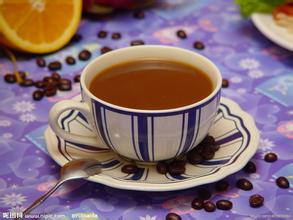Honey-treated Indonesian coffee Lasuna Vahana Manor coffee flavor and taste characteristics of boutique coffee
After entering the 1960s, there are still many large-scale anti-China and anti-Chinese riots in Indonesia, such as the anti-Chinese riots that spread from West Java to Central and East Java from March to May 1963, the all-Indonesian anti-Chinese wave in 1965-1967, the anti-Chinese riots caused by the anti-Japanese movement in 1974, the anti-China riots caused by student demonstrations in Jakarta in 1978, and the anti-Chinese riots in Java in mid-November 1980. In the 1980s, anti-China and anti-Chinese bloodshed of all sizes and degrees occurred one after another, almost every year in various parts of Indonesia.
Suharto came to power in 1965 after leading the army to suppress what officials called a "communist coup." Suharto, who has military power, declared the Communist Party of India an illegal organization and launched the "Qing Communist Movement", which began in 1966 and lasted for three years. The so-called "Qing Communist Party" is actually a massacre. The US Central Intelligence Agency once called Indonesia during this period "the worst mass murder in the 20th century". It is estimated that this series of actions against Chinese have been launched since October 1967. The Indonesian authorities have painted a wide area of land on the border between West Kalimantan and Malaysia as a "red line area", forcing Chinese living in this area to move to Yamaguchi, Kundian and other cities. The Indonesian military also alleges that nine elders of the Daya (Indonesian alpine aborigines) were killed by the Chinese. At that time, vengeful Daya placed red earth bowls containing chicken or dog blood in front of many Chinese homes. This is a sign of revenge for the Daya people. Any Daya people who see the Red Bowl have the responsibility to go into the house and kill all the people inside. It is precisely because of this that the anti-Chinese incident at that time was also known as the "Red Bowl incident."
In 1965, the then Indonesian President Sukarno (Sukarno) because of his political position inclined to the communist camp, the then US government instigated Indonesian soldiers to overthrow the Sukarno regime, but it was exposed by Sukarno's Letkol Untung. All the military leaders of the coup were executed except Suharto. Suharto organized opposing soldiers, and Su moved elite private troops from Sumatra to the capital, and entered the capital to carry out a large-scale crackdown, instigating an "anti-communist purge" across Indonesia. Then, in less than a year, he almost wiped out all the Indonesian Communists. As the people's Republic of China participated in assisting the Indonesian government of Sukarno, a large number of Chinese were killed.
Sunda Hejo processing plant is located in Bandung, West Java Province, the main coffee growing range is Malabar, about 1650 meters above sea level, volcanic soil (where the coffee grown in volcanic soil has no smoky taste), spring water, the mountain area has a large temperature difference between day and night, which is very suitable for coffee cultivation. Cooperative farmers are mainly local village residents, about 100 people, with a coffee processing plant. The main varieties are Typica, Caturra, Tim-Tim, Catior, S795 and so on. The main treatments are full washing, semi-washing, honey treatment, solarization, a small amount of Indonesian traditional wet ploughing and many mixed treatments. Indonesian coffee was planted under the rule of the Netherlands. At that time, the Dutch introduced Yemeni coffee to Indonesia for planting, and the primary place for planting is today's Sunda area, so it can almost be said that Sunda in Java is the starting point of Indonesian coffee. Before the establishment of the Klasik Beans cooperative, Java coffee mainly came from the four major processing plants in East Java, and farmers in the Sunda producing area in West Java still maintained the model of planting, processing and selling to raw bean merchants in small quantities per household. It is such a mode of small household planting and treatment that in the era of rapid development of coffee variety hybridization and variation, West Java is still planting primitive Typica trees transplanted here by early Dutch rulers in isolation from the rest of the world.
This time in the processing plant, lucky cup tested the Typica treated by Michael and cooperative farmers. They used three treatments, among which the honey-treated Typica was stunning, which was objectively higher in quality than most Panamanian rosy summer coffee in this season.
The Typica is transplanted from Gulali and is also marked Typica Gulali. It has a history of more than 80 years. This is the first time that cooperatives have introduced this variety and planted it in the Malabar Mountains of Sunda Hejo. It has been planted for 3-5 years and has not yet been mass-produced.
Of course, the purpose of this experiment is to select the processing method for the next quarter of Typica production, so it's not surprising that full-washed Typica tastes a little like fermentation failure.
This Typica and more about Indonesian coffee varieties and handling will be introduced in more detail in the next chapter, including Mantenin, which we often see.
This is a summary of the history of coffee cultivation in Indonesia and a brief introduction to Klasik Beans cooperatives.

Important Notice :
前街咖啡 FrontStreet Coffee has moved to new addredd:
FrontStreet Coffee Address: 315,Donghua East Road,GuangZhou
Tel:020 38364473
- Prev

Indonesian Coffee Flavor and Taste characteristics Fine Coffee beans introduction to Kahayang Gan Manor
Indonesia is located in southeastern Asia, crossing the equator, bordering Papua New Guinea, East Timor and Malaysia, and facing Thailand, Singapore, the Philippines, Australia and other countries. Indonesia crosses the equator (12S-7N), and more than 70 per cent of its territory is located in the southern hemisphere, so it is the largest country in the southern hemisphere of Asia (East Timor is also a southern hemisphere country). Longitude over 9
- Next

Honduras Santa Barbara Manor Coffee Flavor Taste Characteristics Boutique Coffee Introduction
The current Constitution of Honduras entered into force on 20 January 1982. The Constitution establishes that Honduras is republican, democratic and representative. The National Assembly is the highest legislative body. The President is the Head of State and Government and the Supreme Commander of the Armed Forces, and exercises the executive power of the State. Cabinet is the executive branch of government, directly led by the President. [2]President Zelaya ignored the Supreme Court, the military, Congress
Related
- Does Rose Summer choose Blue, Green or Red? Detailed explanation of Rose Summer Coffee plots and Classification in Panamanian Jade Manor
- What is the difference between the origin, producing area, processing plant, cooperative and manor of coffee beans?
- How fine does the espresso powder fit? how to grind the espresso?
- Sca coffee roasting degree color card coffee roasting degree 8 roasting color values what do you mean?
- The practice of lattes: how to make lattes at home
- Introduction to Indonesian Fine Coffee beans-- Java Coffee producing area of Indonesian Arabica Coffee
- How much will the flavor of light and medium roasted rose summer be expressed? What baking level is rose summer suitable for?
- Introduction to the characteristics of washing, sun-drying or wet-planing coffee commonly used in Mantenin, Indonesia
- Price characteristics of Arabica Coffee Bean Starbucks introduction to Manning Coffee Bean Taste producing area Variety Manor
- What is the authentic Yega flavor? What are the flavor characteristics of the really excellent Yejasuffi coffee beans?

